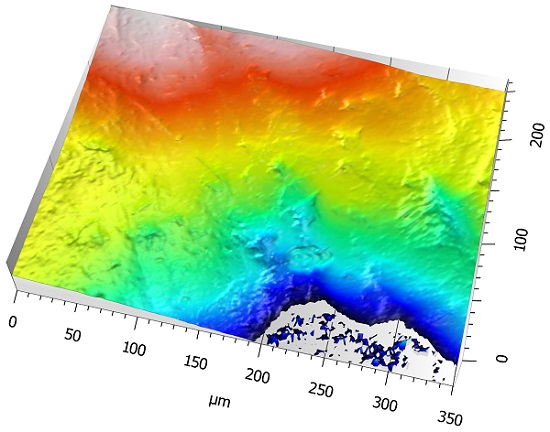
Microwear, or use-related surface modification, is based on the correlation between function, form, and behavior. This method of analysis provides us with a wealth of information on the use or erosion of materials (and artifacts) or the function of anatomical parts. The range of questions that microwear has been applied to are varied and include corrosion and erosion on various industrial materials, lithic tool use, and dental microwear. Dental microwear provides a method to obtain paleodiet and paleobiological data from a wide variety of taxa, ranging from humans to dinosaurs. 3D Dental Microwear Texture Analysis (3D DMTA) (Scott et al. 2005, 2006) combines the use of high-resolution optical profilers with
the analysis of the data using scale-sensitive fractal analysis (Toothfrax and Sfrax software, Surfract Corp). This is a new analytical tool to study microwear texture patterns. This method allows for the statistical characterization of microwear features and results in the reduction of inter and intraobserver variability and also increases the accuracy and repeatability of the results. 3D-DMTA has demonstrated its potential to distinguish among diets of medium and large species that inhabit different habitats such as primates, bovids, and carnivores. This allows for a more refined distinction of diet based on the distribution of pits and scratch size, commonly used in two-dimensional studies.
Publications:
- Belmaker, M., Krueger, K.L., Henry, A. and Bar-Yosef, O. (2012). Earliest evidence for non-dietary anterior tooth use behaviors in Homo. Paleoanthropology Society Meetings Abstracts, Memphis TN, 2-3 April 2012 PaleoAnthropology 2013:A
- Belmaker, M. and Ungar, P. (2010). Micromammal microwear texture analysis – preliminary results and applications for paleoecological study. Paleoanthropology Society Meetings Abstracts, St. Louis, MO, April 2010 PaleoAnthropology 2010:A2
For a news article on our white light confocal microscope see HERE and our Tribology lab.